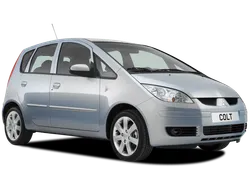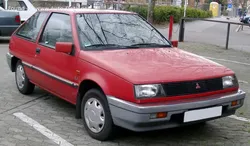

Mitsubishi Colt - Generation 2 C10 Overview
Discover the Mitsubishi Colt and its second generation (C10) in detail. Learn about features, specifications, and history of this iconic model in Portugal.
The Mitsubishi Colt Generation 2, known by its internal designation as the C10, made its introduction in the early 1970s and is an important chapter in the history of compact cars. Launched in 1973, the C10 wa...
Technical Specifications
Select Version
Dimensions
Engine
Driving
Others
History and Features
Mycarro AI
Apr 26, 2025
The Mitsubishi Colt Generation 2, known by its internal designation as the C10, made its introduction in the early 1970s and is an important chapter in the history of compact cars. Launched in 1973, the C10 was a significant advancement over its predecessor, the Colt C60, consecutively utilizing the same platform but delivering enhancing features that helped the model to stand out in a competitive market. The Colt C10 was available in a variety of body styles, including a two-door sedan, a four-door version, a three-door hatchback, and a five-door variant, providing consumers with diverse options.
Design and Development
The design of the C10 Colt reflects the spirit of the late 1970s, with its clean lines and a functional yet attractive aesthetic. Mitsubishi aimed to create a compact car that was not only economical but also engaging to drive. The C10 carried a lower profile than its predecessor, lending itself to enhanced aerodynamics. The interior offered practicality and comfort, appealing to the everyday driver. Items such as spacious front seats and a straightforward dashboard were welcomed features for a compact car of the time.
Engineering is a critical aspect of the C10’s makeup. The second generation Colt was powered by a range of four-cylinder engines, including a 1.2-liter and a 1.4-liter, providing users with options that balanced performance with fuel efficiency. The engines were mated to either a four-speed manual transmission or an optional three-speed automatic, catering to a wide array of driving preferences. Additionally, certain models featured rear-wheel drive, which was becoming a standard in Japanese compact cars of its era.
Performance and Handling
The performance of the C10 Colt was respectable for its class. The smaller engines offered adequate power for urban commuting, with a 0-60 mph time that was competitive for the time period. Though it may not have been the fastest vehicle on the road, it made up for this with nimble handling and a responsive steering system. The lightweight body combined with sensible engine options resulted in a vehicle that was easy to maneuver, especially in crowded city environments.
Generally, feedback from consumers and reviewers alike praised the Colt C10's balanced ride quality. Mitsubishi's engineering aimed to reduce noise and vibration within the cabin, making it an attractive option for those looking for a daily driver that remained economically viable. This combination of comfort and practicality resonated well with buyers, further solidifying Mitsubishi as a reputable automaker.
Market Performance and Popularity
The C10 Colt generation found considerable success both in Japan and international markets. By offering a reliable and economical vehicle, Mitsubishi was able to tap into the growing demand for compact cars during an oil crisis era, which underscored fuel efficiency. Its affordability made it accessible to a wide variety of consumers, resulting in high sales figures and threaded into Mitsubishi's growth strategy during the 1970s.
In markets like Europe and Australia, the C10 cultivated a loyal following. Its adaptability allowed it to be well-suited to various driving conditions and preferences, contributing to its lasting legacy. The affordability of the parts aided in inspections and repairs which further persuaded buyers to opt for a Colt over competitors.
Legacy and Conclusion
The Mitsubishi Colt Generation 2 (C10) is remembered as a pivotal model in the brand's history. It laid the groundwork for subsequent generations while setting certain benchmarks in the compact car segment. As Mitsubishi continues to innovate and evolve, the C10 remains a beloved symbol of practicality and reliability that represents a certain era in automotive history.
Today, classic enthusiasts and collectors celebrate the C10 Colt for its simplistic charm and dependable performance. It’s a reminder of a time when cars were constructed with a notion of accessibility, functionality, and fuel efficiency—qualities that are still relevant in today’s automotive design philosophies. The C10 Colt's legacy lives on, as it exemplifies the essence of Mitsubishi's commitment to building vehicles that meet the needs of the drivers.
